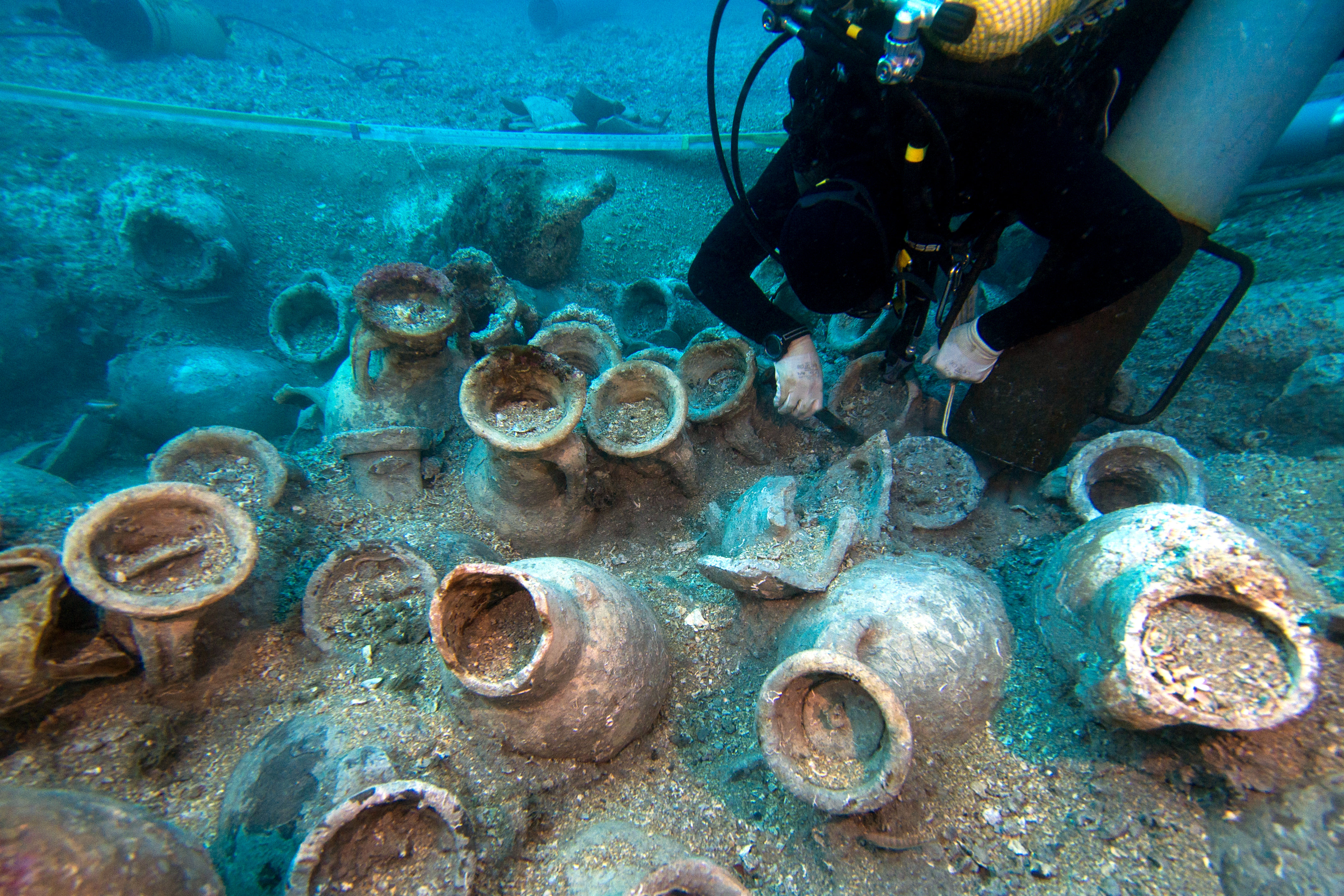Wooden remains of Roman shipwreck discovered
Off the coast of northern Catalonia, the unusually well-preserved structure was also protected by over 100 amphoras

When thinking of Ancient Rome, for most, Catalonia might not be the first place that comes to mind. But, perhaps it should be: just across the Mediterranean Sea, this was the first place on the peninsula to be colonized by the empire. One can still find relics everywhere, from ruins in the center of Barcelona, to underground tunnels in Vic, to the famous amphitheater of Tarragona. And now, a fascinating new underwater discovery has been made.
Archeologists have discovered that a sunken Roman ship, found near the Formigues Islands just off the coast of northern Catalonia, preserves part of the wood of the structure. This is a pioneer discovery in the area, since the wrecks located so far have only yielded remains of cargo (i.e. ancient containers known as amphora). And indeed, amphoras were also found in this case, with divers documenting 135 of them.

New hypotheses on maritime commerce
The remains of the vessel, possibly dating back to the beginning of 100 BC, lie at around 45 meters below the sea. It’s known that the ship would have been 10 to 15 meters long, and that it was used to redistribute goods throughout the small ports in the area, perhaps carrying salted fish or fish sauce.
The head of the Center of Underwater Archeology (CASC), Gustau Vivar, stated that finding conserved wood as part of the structure will allow for a detailed study of the architecture of the ship, and that it even opens new hypotheses on the maritime commerce of the time.
Although the original discovery was made at the end of 2016, the wreck – unique in that it’s especially well-preserved compared to many in the Mediterranean – is now being explored in detail. A specialized team of eight divers dove down to 45 meters; in this particular mission, the objective was to discover the size of the ship.
A difficult find
During this last effort, a square area of four by four meters was excavated. The rest of the wreck will be unearthed and documented in the coming years. And already, the divers found 135 amphora – a layer of which, incidentally, protected the wooden structure of the ship from decay.
“It’s very difficult for wood to be conserved, because often, shipwrecks are found by the coast; that is, these are ships that crashed against the rocks, turned over, and of which only their amphora cargo is found,” explained Vivar. In this case, though, experts theorize that this ship could have run into a storm, and dropped anchor to avoid the reef, but was taken under by the waves. It sank much less violently, which allowed the wood to be preserved.